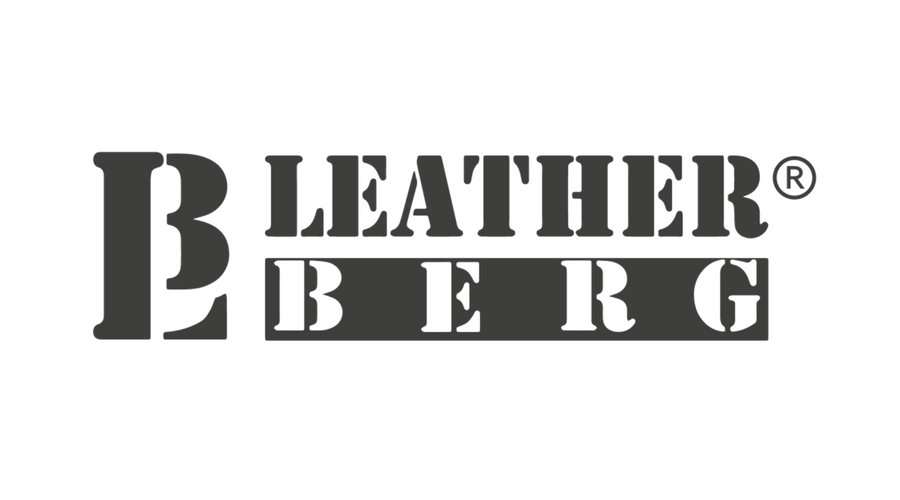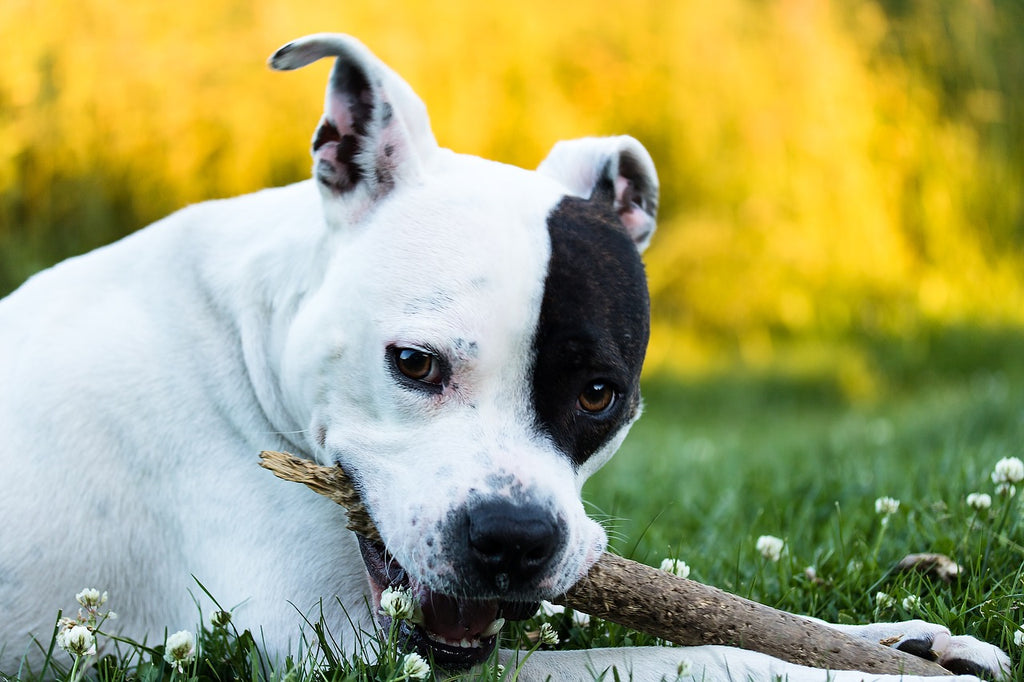Woof Woof! Welcome our dear friends, dog lovers. As the weekend evaporates in the misty air around us, so is the new Leatherberg weekly blog post brought to life.
Now, after the poetic entrance, thank you for being interested in education, and hopefully sharing the knowledge you will gain with your friends and family. As you know, we are putting a lot of effort to bring you the most relevant content from the best experts in pet industry – such as dog trainers, vets, bloggers, volunteers, dog rescue centers, product manufacturers, etc.
This week, we will bring you some relevant information on how to teach your dog not to bite, or be overly aggressive.
WHY IS MY DOG CHEWING EVERYTHING AND EVERYWHERE?
Chewing is something that comes naturally to every dog. Every dog feels the instinctual need to sharpen its teeth and hone his biting skills. Chewing on the right things, like specially designed chew toys for instance, can even help the dog clean his teeth and remove plaque.

Even though chewing is natural and healthy, that does not mean that the dog should be given carte blanche and allowed to chew everything in sight. It is vital for every dog to learn the difference between the things it is OK to chew on, like toys and ropes, and the things that are off limits, such as carpets, shoes and dog leashes.
START AS EARLY AS POSSIBLE – WELL TRAINED PUPPY IS WELL BEHAVED DOG
When working with a new puppy, it is advisable to keep the puppy in a small, puppy proofed room for at least a few weeks. This is important not only to prevent chewing but to properly house train the puppy as well.
Really Puppy proof your home before arrival! Hide electrical cords and cables, keep trash tightly closed, put child-proof latches on cupboards and closets, secure cleaning supplies. Keep dangerous things in the bathroom secured — razors, perfumes, cotton balls, soap, etc... and keep the toilet lid down at all times.
Older dogs should also be confined to a small area at first. Doing this allows the dog to slowly acquaint him or herself to the smells and sights of the new household.
CHEWING TOYS ARE VERY BENEFICIAL
When you set up this small, confined area, be sure to provide the puppy or dog with a few good quality chew toys to keep him entertained while you are not able to supervise him. Of course the dog should also be provided with a warm place to sleep and plenty of fresh clean water.
As the dog is slowly moved to larger and larger portions of the home, there may be more opportunities to chew inappropriate items. As the dog is given freer access to the home, it is important to keep any items that the dog or puppy should not chew, things like throw rugs, shoes, etc. up off of the floor. If you forget to move something and come home to find that the dog has chewed it, resist the urge to punish or yell at the dog. Instead, distract the dog with one of its favorite toys and remove the inappropriate item from its mouth.

Why is your dog chewing in the first place?
Here are 5 reasons your dog may be getting into your stuff and chewing, and how to make them stop!
Puppy Habits
When dogs are young, they can’t resist putting everything in their mouth. They want to explore and learn about the world around them- which often means everything they interact with goes right in their mouth. If your dog is a puppy and they are chewing, you probably don’t need to worry. Dogs usually outgrow this habit as they get older. What you can do is make sure your things that they could chew on are out of reach. You also should work on training and your authority to keep them from having this habit later in life.
Anxiety
Do you notice your dog is only doing this annoying chewing when you’re out of the home? If so, the cause might be separation anxiety. If this is the cause, you have to do a little more work to correct the issue. When you leave your house, make sure you’re not looking at, touching, or talking to your dog. This makes it easier for you to leave and will keep them feeling more calm. You should also try to have your dog well exercised before you leave so they are tired out and won’t have the energy to be anxious!
Lack of Entertainment
Many dogs start to chew on things out of pure boredom. If they haven’t exercised that day or don’t have the proper entertainment when you’re gone, they might turn to chewing as a source to get that energy out. Make sure you are leaving challenging toys for your dog to play with when you’re gone, including interactive dog toys. Also be sure that your dog is getting enough play time and you’re taking long, daily walks.

Natural Instinct
Dogs, purely by nature, enjoy chewing on things. It is a part of their blood and their background as an animal. The key is to give them items to chew so they don’t get into items that shouldn’t be chewed! Redirect the habit to other items, such as chew toys or bones. Whenever you do catch your dog chewing on a shoe or other inappropriate item, calmly correct your dog and give an alternative instead.
Nutritional or Physical Health
Sometimes your dog can be suffering from a nutritional deficiency, which can lead them to want to eat things that aren’t food (pica). There can also be other medical or physical issues that cause this. If you notice your dog suddenly doing this and aren’t sure what else it could be, it is worth asking your vet about.
How do you correct it? How to teach your dog not to chew ?
The dog should then be provided with one of its favorite toys. Praise the dog extensively when it picks up and begins to chew its toy. This will help to teach the dog that it gets rewarded when it chews certain items, but not when it chews other items.
Teaching the dog what is appropriate to chew is very important, not only for the safety of your expensive furniture and rugs, but for the safety of the dog as well. Many dogs have chewed through dangerous items like extension cords and the like. This of course can injure the dog severely or even spark a fire.
Most dogs learn what to chew and what not to chew fairly quickly, but others are obviously going to be faster learners than others. Some dogs chew because they are bored, so providing the dog with lots of toys and solo activities is very important. It is also a good idea to schedule several play times every day, with one taking place right before you leave every day. If the dog is thoroughly tired after his or her play session, chances are he or she will sleep the day away.
Other dogs chew to exhibit separation anxiety. Many dogs become very nervous when their owners leave, and some dogs become concerned each time that the owner may never come back. This stress can cause the dog to exhibit all manners of destructive behavior, including chewing soiling the house. If separation anxiety is the root of the problem, the reasons for it must be addressed, and the dog assured that you will return.
This is best done by scheduling several trips in and out of the home every day, and staggering the times of those trips in and out. At first the trips can be only a few minutes, with the length slowly being extended as the dog’s separation anxiety issues improve.
BITING? GRRRR. LET'S BRING IT TO AN END.
Biting is one of those things that every puppy seems to do, and every puppy must be taught not to do. Like many behaviors, such as jumping up on people, biting and nipping can seem cute when the puppy is small, but much less so as he gets older, larger and stronger.
Left to their own devices, most puppies learn to control their biting reflex from their mothers and from their littermates. When the puppy becomes overenthusiastic, whether when nursing or playing, the mother dog, or the other puppies, will quickly issue a correction.

Unfortunately, this type of natural correction often does not occur, since many puppies are removed from their mothers when they are still quite young. It is therefore up to puppy’s owner to take over this important process.
SOCIALIZING IS THE WAY TO GO!
Socializing the puppy with other dogs and puppies is one of the best and most effective ways to teach the puppy the appropriate and non-appropriate way to bite, and to curb the biting response.
Many communities and pet stores sponsor puppy playtime and puppy kindergarten classes, and these classes can be great places for puppies to socialize with each other, and with other humans and animals as well. As the puppies play with each other, they will natural bite and nip each other. When one puppy becomes too rough or bites too hard, the other puppies will quickly respond by correcting it.
The best time for this socialization of the puppy to occur is when it is still young. It is vital that every dog be properly socialized, since a poorly socialized dog, or worse, one that is not socialized at all, can become dangerous and even neurotic. Most experts recommend that puppies be socialized before they have reached the age of 12 weeks, or three months.
Also…
Another reason for socializing the puppy early is that mothers of young children may be understandably reluctant to allow their young children to play with older or larger dogs. Since socializing the dog with other people is just as important as socializing it with other dogs, it is best to do it when the puppy is still young enough to be non-threatening to everyone.
It is important for the puppy to be exposed to a wide variety of different stimuli during the socialization process. The socialization process should include exposing the puppy to a wide variety of other animals, including other puppies, adult dogs, cats and other domestic animals. In addition, the puppy should be introduced to as wide a cross section of people as possible, including young children, older people, men, women and people from a variety of ethnic backgrounds.
Prevent the biting !
While socialization is very important to providing the puppy with life lessons and preventing him from biting, it is not the only method of preventing unwanted biting and mouthing. Giving the puppy appropriate things to play with and bite is another good way to control inappropriate biting. Providing a variety of chew toys, ropes and other things the puppy can chew is important to preventing boredom, keeping his teeth polished and keeping him from chewing things he should not.

As with any training, it is important to be consistent when teaching the puppy not to bite. Every member of the family, as well as close friends, who may visit, should all be told that the puppy is to be discouraged from biting. If one person allows the puppy to chew on them while everyone else does not, the puppy will quickly become confused, and that can make the training process much more difficult than it has to be.
The key is to be and stay consistent! Consistency relates to body language, being calm, yet assertive, and having consistent exercise/eating routines.
For now, that is all we wanted to share with you regarding prevention of dog chewing everything in your apartment, and teaching him how to stop biting.
We do want to remind you to check our facebook group: Dog Training & Caring.
Also if you want to participate in a monthly giveaway - Join our Loyalty club on the top right corner of the webpage. Yes - each month, 1 lucky member of our club recieves a FREE Leatherberg product (brown or black leather dog leash, leather traffic leash, or maybe leather dog collar - since this year we also have Leatherberg t-shirts). No hustle, we randomly pick one member by their email, once you send us the adress we take care of shipping and everything.
If you are looking to upgrade your used and poor dog leash, go check out our STORE! You can choose between the black and brown premium quality leather dog leash.
That is it our friends, speak to you soon. For any questions send us the email and we will get back to you in a heartbeat.
_________________________________________________________________
P.S. We have a surprise gift to all you faithfull readers! If you go to our STORE and use code: DOGBITE you will get 20% discount on an entire order.
Take Care!
Woof Woof!













